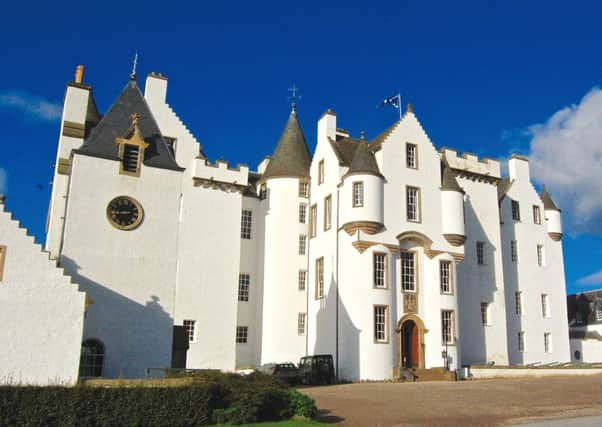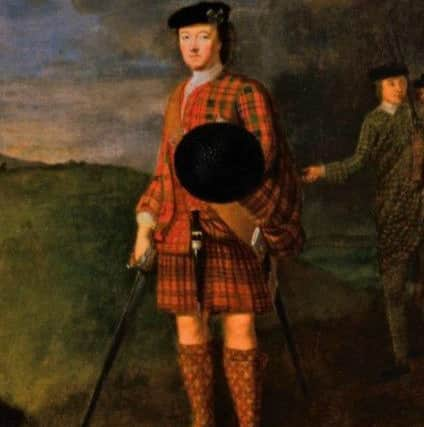Jacobite relics on show at castle besieged during '˜45 rising


Blair Castle, which twice hosted Bonnie Prince Charlie, played a remarkable role in the uprising given its strategic position in Highland Perthshire.
Crucially, it was also the family home of Lord George Murray, general of the Jacobite army, who became pitched against his brother, 2nd Duke of Atholl, who supported the British Army during the rebellion.


Advertisement
Hide AdAdvertisement
Hide AdWhile such family splits were not uncommon at the time, Lord George led an assault on the family seat - pipes playing and colours flying - in March 1746 to flush out the government forces stationed there.
It became the last besieged house on British soil as a result.
Now, Blair Castle has opened its collection of Jacobite relics to the public to tell its unique story.


On show are Lord George’s white cockade - the Jacobite emblem - a shield used during Culloden, a set of bagpipes played on the battlefield and miniatures of Bonnie Prince Charlie, which were distributed to his supporters. A grand portrait of Lord George in full Highland dress is also on show.
Advertisement
Hide AdAdvertisement
Hide AdJane Anderson, archivist, said Blair Castle became an important stronghold during the rebellion, not least because of its location.
She said: “If you were heading north, you had to go past it - and that is why both sides wanted it.
“Blair Castle was located at a key strategic position, guarding the way between highlands and lowlands at the Pass of Killiecrankie.
“The exhibition and the other contents in the castle are items that relate to the Atholl family during the Rising that are on show nowhere else in this year of History and Heritage.
Advertisement
Hide AdAdvertisement
Hide Ad“The portrait of Lord George shows the foremost Jacobite commander in full Highland dress, while his white cockade and other family objects can be seen close up in the Treasure room.”
Letters between Lord George and his eldest brother, William, also a Jacobite, show how the Jacobite general was prepared to destroy his family seat during the siege.
Dated March 24, 1746, around a week after Jacobite troops first surrounded the castle, the letter said: “The people in the castle have not set out their heads since we came and are living on bisket (sic) and water.
“If we get the castle, I hope you don’t mind us demolishing it.”
Advertisement
Hide AdAdvertisement
Hide AdIn response, William gives his backing to the plan but sets out his concerns about a number of family portraits.
William wrote: “Without further ceremony for me, you may now do what the gentlemen of the country think fit with the castle, I am in no concern about it.
“Out great-great-grandfather, grandfather and father’s picture will be an irreplaceable loss on blowing up the house, but there is no comparison to be made with these faint images of her of our forefathers and the more necessary public service.”
The Duke also goes on to detail a “convenient passage” that could be built between a door in the old stable and the castle.
Advertisement
Hide AdAdvertisement
Hide AdThe siege of Blair Castle was ultimately unsuccessful. The British Army refused to surrender and Bonnie Prince Charlie demanded Lord George’s troops to head to Culloden.
Following the Jacobite defeat, Lord George fled to the Netherlands.
“He was very lucky to escape with his life,” Ms Anderson added.
Blair Castle became the last in tetet
Blair Castle was the last castle in Britain to be besieged as the Jacobite troops retreated to Culloden in 1746, under the command of the 2nd Duke’s brother Lord George Murray. The castle houses many treasures relating to these turbulent times.
Advertisement
Hide AdAdvertisement
Hide AdOn 17th March 1746 Lord George Murray returned with the Atholl Brigade to begin the siege on his family home and put it back in Jacobite hands. George Murray was the brother of the current Duke of Atholl, James Murray so it was very much a family affair with one supporting Prince Charles and the other the government. It is said when Lord George arrived at Blair he had ‘pipes playing and colours flying’.